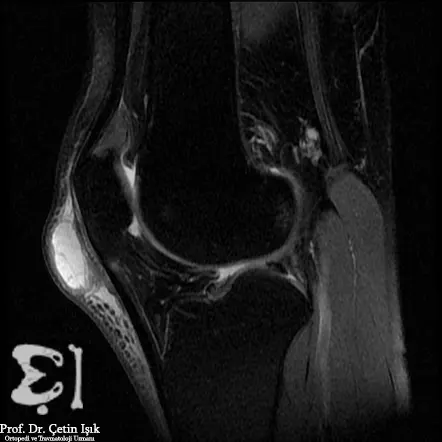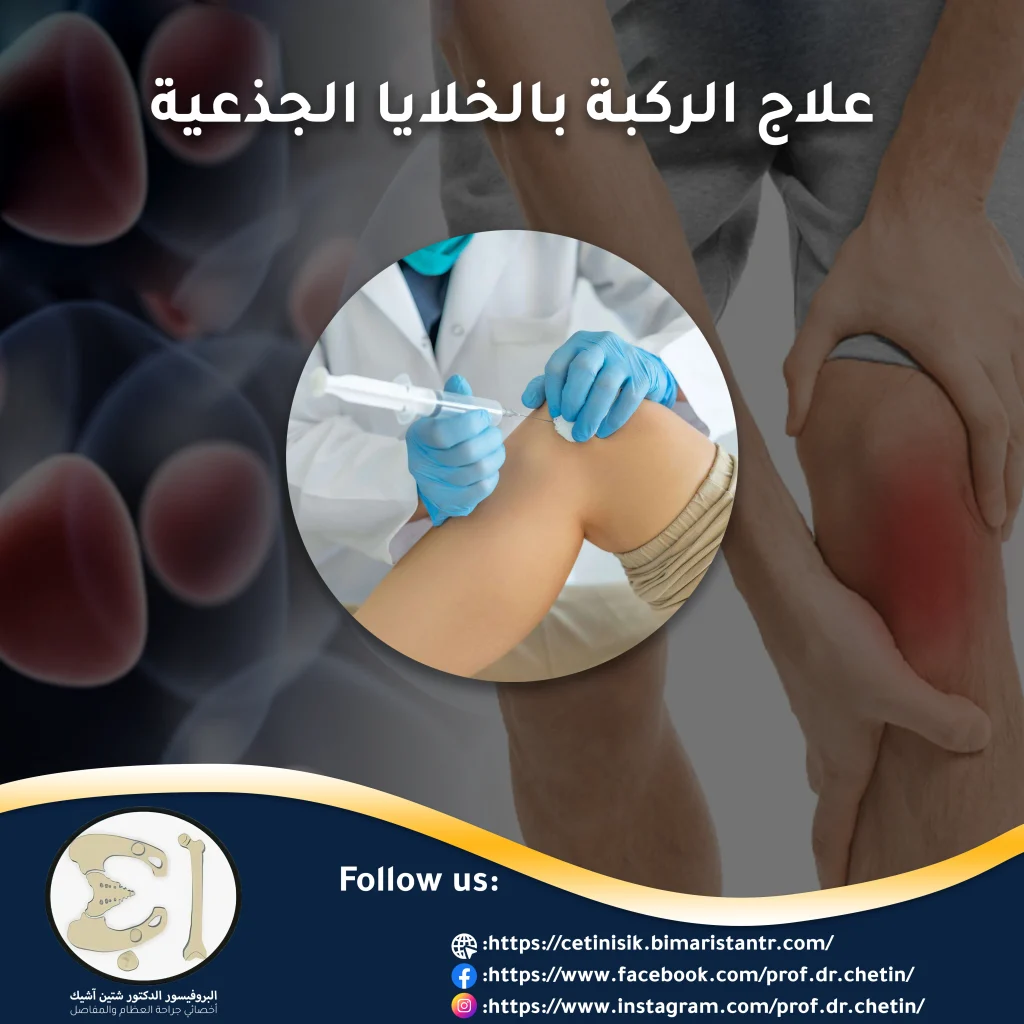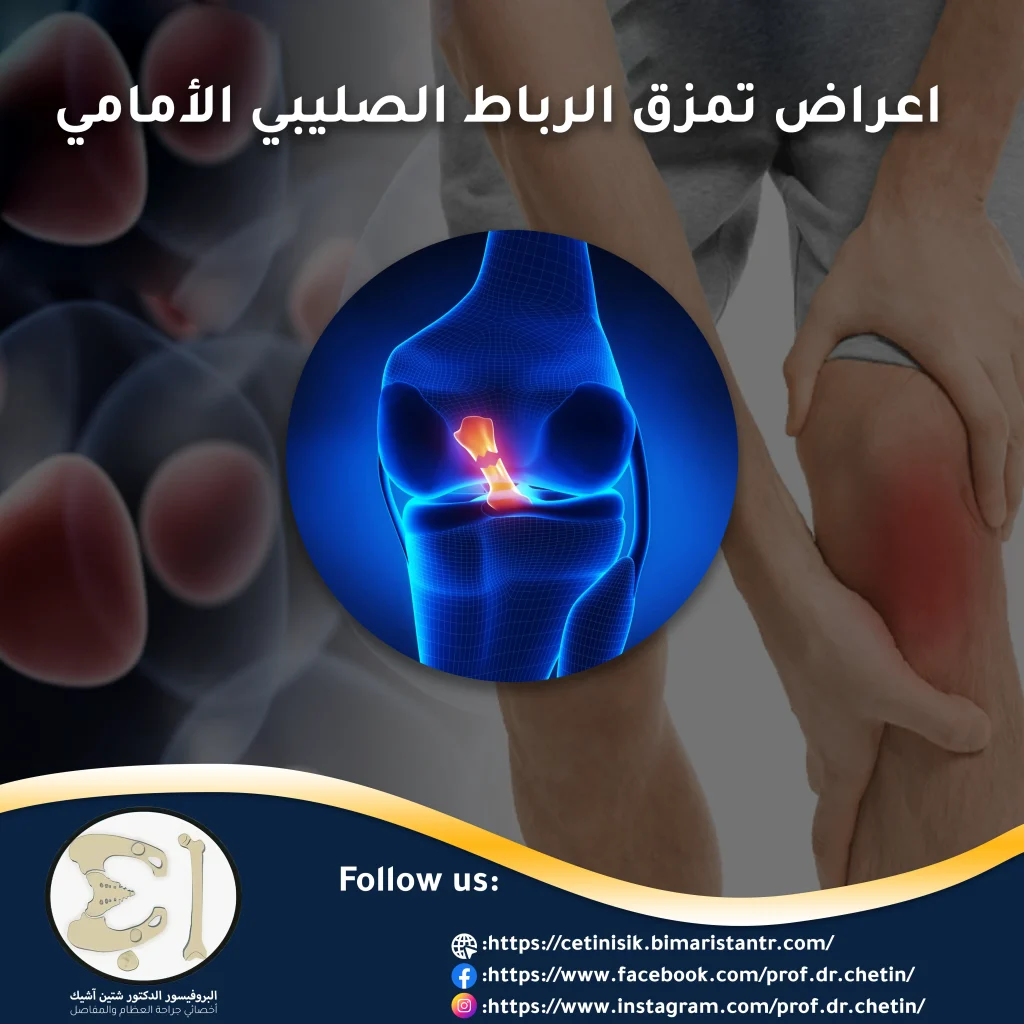Knee bursitis is a common inflammatory joint disease that significantly affects the patient’s life and prevents him from walking properly, as the inflamed knee sac impedes the joint from moving normally.
What is bursitis?
Knee bursitis, also called Cystic inflammation of the kneecap, is a disease characterized by inflammation and edema in the synovial sac in the knee joint in front of the kneecap. This sac is damaged in some way and produces fluids that cause swelling and pressure on the joint.
The presence of inflammation related to the bursa behind the kneecap is one of the common problems of the knee joint, and it is treatable in most cases with simple methods; unless the patient is extremely careless, then very serious complications may occur as a result of it.

The patellar bursa
The bursa is a fluid-filled structure that separates the skin, and the ligament or the ligament andbones, and the primary function of the bursa is to reduce friction between neighboring structures with each other, Bearing in mind that there are several cystic structures in the knee called the bursa, including:
- Suprapatellar bursa.
- Infrapatellar bursa.
- Prepatellar bursa.
Causes of knee bursitis
The most common cause of knee bursitis is pressure applied to the knees as a result kneeling and bending for a long time, as this is most commonly seen when moving in certain occupations such as plumbers, miners, and gardeners.
Direct trauma to your knees can cause bursitis as well. Foot injuries in athletes cause severe pain and raise the possibility that the synovial cyst will fall into a state of acute patellar inflammation, especially for those who practice strenuous sports such as football and basketball players.
The incidence of knee bursitis also increases when there are other joint problems, such as:
- Rheumatoid Arthritis
- Gout
- Excess friction due to overuse
In addition, the cause of knee bursitis is the injuries that lead to cracking of the skin and the entry of types of bacteria into the synovial knee sac, which becomes filled with fluid and pus after a period of this problem, although septic synovial sac inflammation (i.e. due to germs) is less common. Otherwise, it is dangerous.
Symptoms of knee bursitis
The most common symptoms seen in a patient's knee suffering from bursitis are:
- Pain which increases when the knee is moved and touched and appears most commonly during the day.
- Rapid swelling in the knee that may be painful in the front of it especially.
- Pain in the bones and tendons in a specific lower extremity area.
- It can cause bursitis in the knee by making it filled with purulent fluid that impedes movement.
- You may have a high temperature and feel pain with night tremors.

Diagnosis of bursitis
While checking the doctor For your knee, he will often ask you about some of the distinctive symptoms mentioned by you, when they started, and the intensity of the pain you are experiencing.
In addition, he will move your affected knee and compare it with the second healthy knee to see the extent of its impact and the condition of the cartilage and surrounding muscles, as there may be another reason for the symptoms that you suffer from than bursitis.
There are some necessary tests that the doctor uses in making a diagnosis of knee bursitis:
- X-ray: It is a simple picture taken of the knee to clarify its overall condition, and it is cheap and not stressful.
- Second imaging modalities: Diagnosis of arthritis is often clinical because there is no need for expensive and stressful investigations, but sometimes a tomography or resonance imaging is performed to check for damage to tendons or soft tissues on the side of the joint.
- Needle aspiration: In some cases, your doctor may suspect so-called joint sepsis, where he needs to insert a thin needle to withdraw a little joint fluid for analysis.

Treatment of bursitis in the knee
The treatment of various types of body infections depends on the same protocol. Each has its own merits, as light and medicinal therapies are started, and surgery is avoided as much as possible. However, knee bursitis is characterized by the availability of many diverse and easy treatment methods.
Pharmacological treatment of knee bursitis
Before giving any medication, you should usually try simple home solutions first, such as:
- Adjusting the movement of the leg and lifestyle: This is related to avoiding activities that worsen your symptoms and postponing any sport or activity in which direct harm to the knees may occur, and it is possible to bend the knee slightly when riding a bicycle only.
- Ice application: It is applied to the joints three or four times a day for twenty minutes each time.
- Elevating the feet: This is preferred in chronic knee bursitis unless you need to walk when necessary.
After following the previous rules of conservative treatment and the symptoms remain, you can start taking anti-arthritis drugs, which are commonly used drugs such as naproxen and ibuprofen. You can also take regular paracetamol if you are allergic to these drugs.
Herbal treatment of knee bursitis
Regardless of the type of knee bursitis and its severity, it is possible to resort to Natural herbal remedies to relieve symptoms and problems that will face the knee later.
Usually people may try different methods:
- Foods that release acids in the intestine: that is, sour foods such as apple cider vinegar, contribute to lowering calcium levels, including reducing the incidence of calcifications in the inflammed bursa.
- Castor oil: one of the most effective anti-inflammatories, it is cheap and does not cause harmful side effects. And often, the most effective way to use it is a direct anointing on the area of inflammation, whether it is a joint or something else.
- Dimethyl sulfoxide: A cream that treats joints with high efficiency, but it may cause irritation of the kneecap skin, and some may not like its distinctive smell.
Surgical treatment of knee bursitis
If the pain and swelling are severe and there is no good response to conventional conservative treatment, cortisone needles are injected directly into the knee to relieve edema in an emergency manner. A high fever and general fatigue in the patient often means that the swelling resulted from a purulent abscess, which is surgically incised and emptied.
Knee bursitis damage
If knee bursitis is left untreated within several months, the problem will progress to an abscess in the kneecap or patella. This very distressing condition can cause bacteremia and, worst case, death.
In some second cases, the bursa cyst in the knee joint thickens and develops chronic inflammation and excruciating pain.
My Story with knee bursitis
“I cried so much for this knee.”
This is how Lina, the athlete, began talking about the horrible, acute bursitis that she suffered from for a long time after participating in a marathon that lasted for about a week. Indeed, her knee began to hurt after the first race of the marathon, but she thought it was normal and her competitive personality prevented her from withdrawing.
Lina participated in two marathons after that as well and did not pay any attention to the problems of the joints, the bursa, or the cystic cavity, and she did not know what these things were; Unfortunately, she experienced the most severe pain of her life two weeks after she took a break and boarded the plane back to Sweden.
Lina admitted that she was late seeking professional medical advice on time, as she tried physiotherapy at home without any significant benefit.
After an exhausting infection in the knee joint and a state of chronic inflammation that lasted for many months, she underwent surgery in which the knee joint bursa was entirely removed. Indeed, after recovering for four months, she was able to regain her life again, But without the obsession with sports and neglecting injuries for sure!
Prevention of knee bursitis
You can protect yourself from bursitis, or knee bursitis, by following a few simple tips:
- Wear knee braces as it works to prevent excessive friction, especially when you perform work that requires sitting on your knees or leaning on them for long periods.
- You should rest the hip and knee as well as the ankle on the affected limb as much as possible through stretching exercises andphysical therapy .
- Place an ice pack on your sore knee and lift it up.
- The best method of prevention remains to consult a doctor Quickly when you notice troublesome symptoms in the knee
Sources:
Common questions
In short, it is the inflammation of the bursa surrounding the knee joint and the accompanying local symptoms such as heat and pain, and general symptoms such as fatigue.
It should be included in the treatments, starting from the easiest and easiest, such as anti-inflammatory medicine in the joints, physical therapy, all the way to injecting the knee bursa with cortisone, and ending with surgery.
No, it is generally not a serious condition and in very rare cases it may cause troublesome problems.
It depends on the treatment. Cortisone injections, for example, cost hundreds of dollars. As for surgery to drain or remove the bursa, it costs about 3,000 dollars.
Yes, this condition has several names.
Bursitis is a common problem and many people cope with it by wearing custom braces, keeping the knee safe, and avoiding strenuous sports as much as possible.
Ankle slide exercise where you lie on your back with your injured knee flat and your good knee bent; Gradually bend the injured knee by rubbing your ankle on the floor until you feel it stretched and slowly extend it again.




